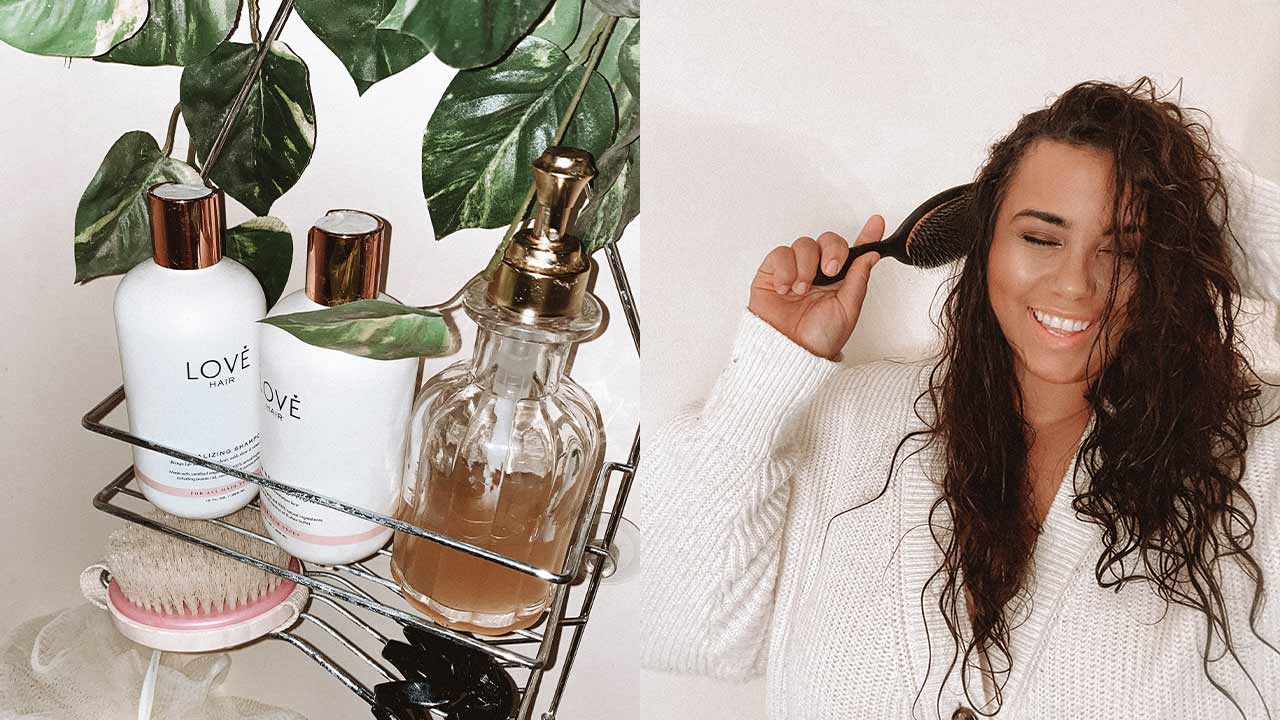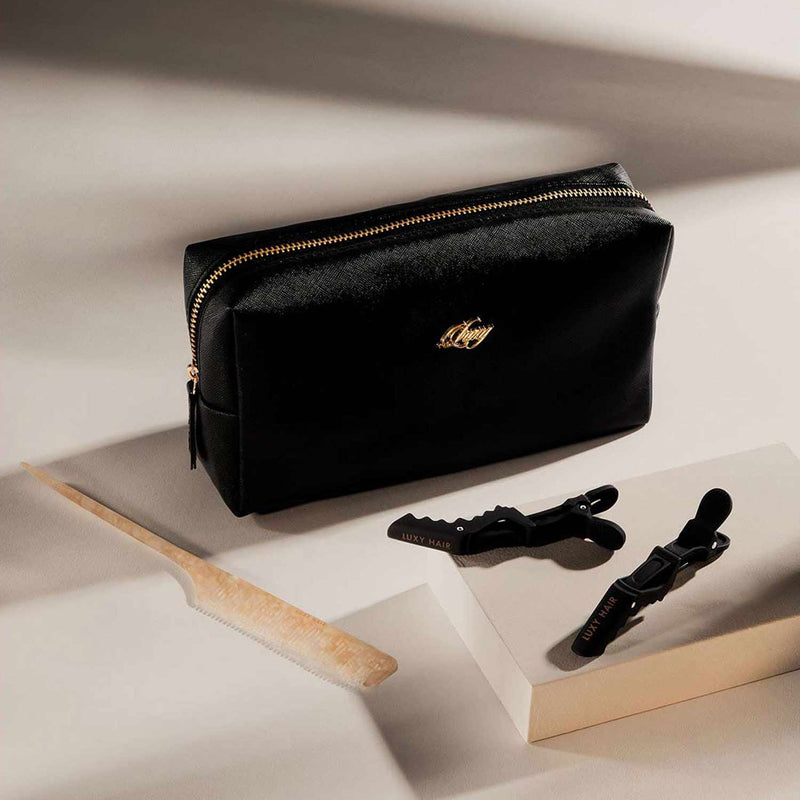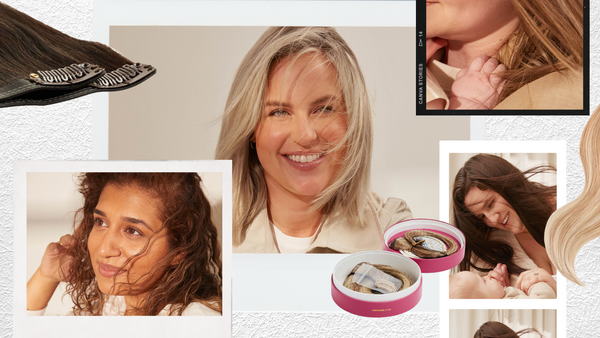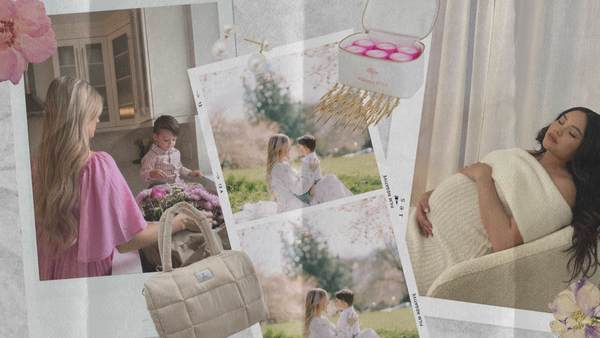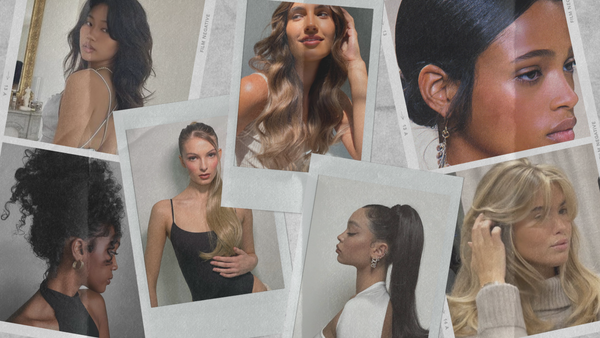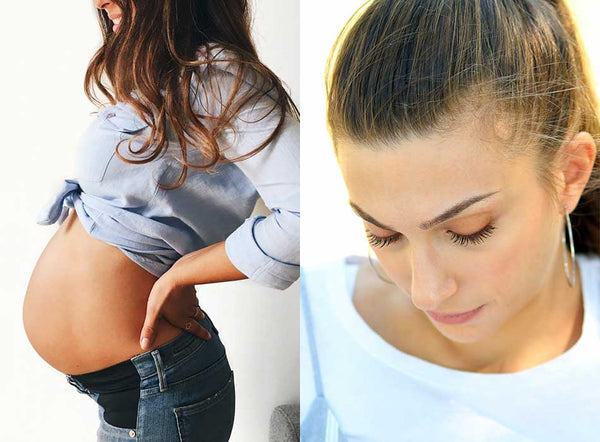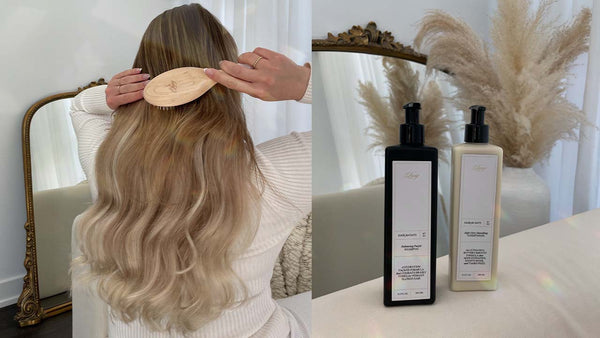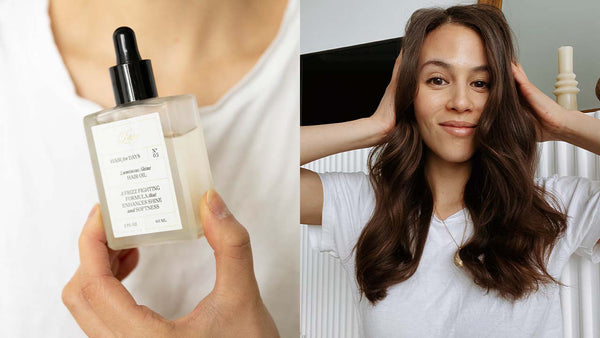Building a hair care routine goes way beyond how often you wash your hair.
While the basics of how to build a hair care routine lie in the foundations of wash, dry, and style, there are many other factors to consider for the healthiest, thickest, and shiniest hair. Although you don’t need a dozen products and tools to get the hair you want, there is more to hair care must-haves than shampoo and conditioner.
If you’re ready to get the most out of your hair, here’s a beginner’s guide on how to build a hair care routine.
 Image by @sincerelyzahra
Image by @sincerelyzahra
Step 1. Determine your hair type
Diameter
Do a simple strand test. Take one hair strand between your fingertips, if you don’t feel anything this is a sign of fine hair. If you do feel the single strand, your hair is of medium width, and if it feels thick or textured, your hair is likely coarse.
Density
Hair density refers to how much hair you actually have. To determine your hair density, take a handful of hair from the front of your head and gently pull it to the side. If a lot of your scalp is visible between the bunch of hair that you pulled, you have thin density, if you can barely see your scalp at all, your hair’s density is thick. Anything in between is medium density.
 Image by @sincerelyzahra
Image by @sincerelyzahra
Elasticity
Have you ever tried to stretch or snap a hair strand? Your hair’s reaction is the simple way to determine the elasticity and strength of your hair. If the hair strand snaps immediately after trying to pull it between your fingers, your hair elasticity is low, whereas if you’re able to stretch the strand your hair elasticity is very high. Hair elasticity helps determine how well your hair can hold any styling. Low elasticity is linked to thin hair, whereas high elasticity, thick to normal hair.
Porosity
This is your hair’s ability to absorb moisture and product. To determine your hair’s porosity, fill a bowl with water and place a single strand of hair in the bowl. If your strand sinks to the bottom it has high porosity and is absorbing all the moisture. If your strand remains under the surface, but floats, your hair is well-balanced and is of “normal” porosity. If the strand floats above the surface of the water your hair has low porosity and does not absorb moisture easily. High porosity usually is a result of damaged, frizzy or dry hair. Low porosity can sometimes feel oily as it will take a lot of product in but may not distribute it accordingly.
Texture
This one’s easy, is your hair straight, wavy, or curly?
Determining your hair type is easier than your dating type – especially because we created this hair type quiz. Knowing your hair type will help you determine which products you need the most and how to build your hair care routine to meet all your needs.
It’s important to keep in mind that hair changes with seasons, for example you may find your hair more frizzy or curly in humid and hot weather or that your hair is less porous in colder months. Slight adjustments may be needed to your routine but shouldn’t throw you off your game.
Step 2. Gather your hair products
 Image by @sincerelyzahra
Image by @sincerelyzahra
Hair care routine must-haves
While the type of needed products will depend on your hair needs, there are a few must-haves for any hair care routine:
- Shampoo and conditioner based on hair type (we can help you narrow it down here)
- Microfiber towel
- A good quality hairdryer with adjustable heat
- A diffuser for our curly hair girls
- Heat protectant spray or cream
- Styling product (spray, gel, mousse, etc.)
- Paddle brush – these are great for generally all hair types. However, paddle brushes are made with different types of bristles and these can be chosen based on hair type. For instance, if you have thick hair, choose a brush with sturdier bristles like nylon and synthetic, which can run smoothly through textured hair.
Hair care routine optionals
- Dry shampoo
- Straightener/flat iron
- Curling wand
- Hair Extensions
- Hair masks
- Scalp massager
Step 3. Determine when to wash your hair
 Image by @sincerelyzahra
Image by @sincerelyzahra
Now that you’re more familiar with your hair type and must-haves, let’s get the basics of your hair care routine down and it starts with your wash routine. Ideally, you should wash your hair no more than three times a week. This will also change depending on your hair type and activity. For instance, if you love your hot yoga classes or find yourself using a lot more product for styling, your hair may get oily quicker because of sweat and build-up, so our advice is to be flexible with your hair wash routine depending on your schedule.
Generally speaking, if you have dry hair, shampoo twice a week. If you have thick or curly hair washing twice a week also works, as natural oils from the scalp don’t get to the hair shaft as quick as those with fine hair.
Ladies with oily hair can wash three times a week.
How to properly use shampoo and conditioner
In any case, conditioner should always be used in your hair wash routine. Conditioner helps to nourish and treat your hair after shampoo. It’s important to apply conditioner to the mid shaft of the hair to the ends massaging the product into the hair and depending on the type of conditioner, leaving it in for a few minutes before rinsing. The mid-shaft and ends usually need the most moisture, especially if you have chemically treated hair, dry hair or damaged ends.
Choose your shampoo and conditioner based on your needs. There are so many products available that treat everything from dry to dyed hair. In all cases look for nurturing ingredients and avoid sulphates.
Other hair washing tips
For a little more TLC use a scalp massager to work in product. Massaging the scalp also helps to circulate oxygen which creates healthier hair.
Watch the temperature! While a hot shower can be super relaxing for some, it’s not the best for your hair. Wash with warm water and make sure you rinse the product thoroughly.
So, the basics of your hair care wash routine: Depending on your hair type, two to three times a week. Use conditioner and concentrate on the mid to ends of your hair. Turn down the tap, rinse thoroughly and adjust your schedule as needed depending on your activities or product use.
Step 4. Drying and styling your hair
Now that washing is out of the way, how about drying? Soak up excess water with a microfiber towel and avoid rubbing your hair between non-microfiber towels.
If using a hair dryer or diffuser, apply hair protectant first and dry accordingly. A paddle brush or round brush can be used if trying to style the hair.
If you have time or will be lounging around the house, apply a spritz of styling product and allow your hair to air dry. Limiting your hair’s exposure to heat as much as possible will help protect the health and integrity of it.
If using a flat iron or a curling wand, depending on the style you want do so after the hairdryer. Heat protectant should be applied and depending on the porosity of your hair apply styling product before and after to set the style. If you want waves or curls to stay overnight, loosely pin them around your head so you’re ready in the morning.
Step 6. Additional hair care routine options
If you’re in between washes or find yourself short on time, dry shampoo is a great addition to any hair care routine. Dry shampoo should be applied at the roots and spread or massaged in with your fingers to absorb extra oil.
Hair masks and conditioning treatments are also great options, especially for those with chemically treated or dry hair. Professional conditioning treatments can be done at your salon once a month, or if you prefer DIY, make your own hair mask at home. Depending on your needs, a hair mask can be done once a week.
Adding hair extensions to your hair care routine
If you’re looking for length or more thickness, clip-in hair extensions can give your fuller, longer hair with a natural look. If hair extensions are already part of your daily routine, keep in mind to wash them at least once a month, if you use more product on them, wash more frequently. To ensure the integrity and longevity of your hair extensions, store them properly in its designated packaging or hair extensions carrier.
Building a hair care routine is all about determining what your hair needs and treating it as such. It doesn’t have to be complicated and most hair care routines will follow, wash, dry, style and treatment steps. The frequency of your hair washing, properly hair drying and protecting your hair from heat and adding any extras as needed make for an easy to follow hair care routine for healthier hair.
Written by: Rosalyn Solomon
